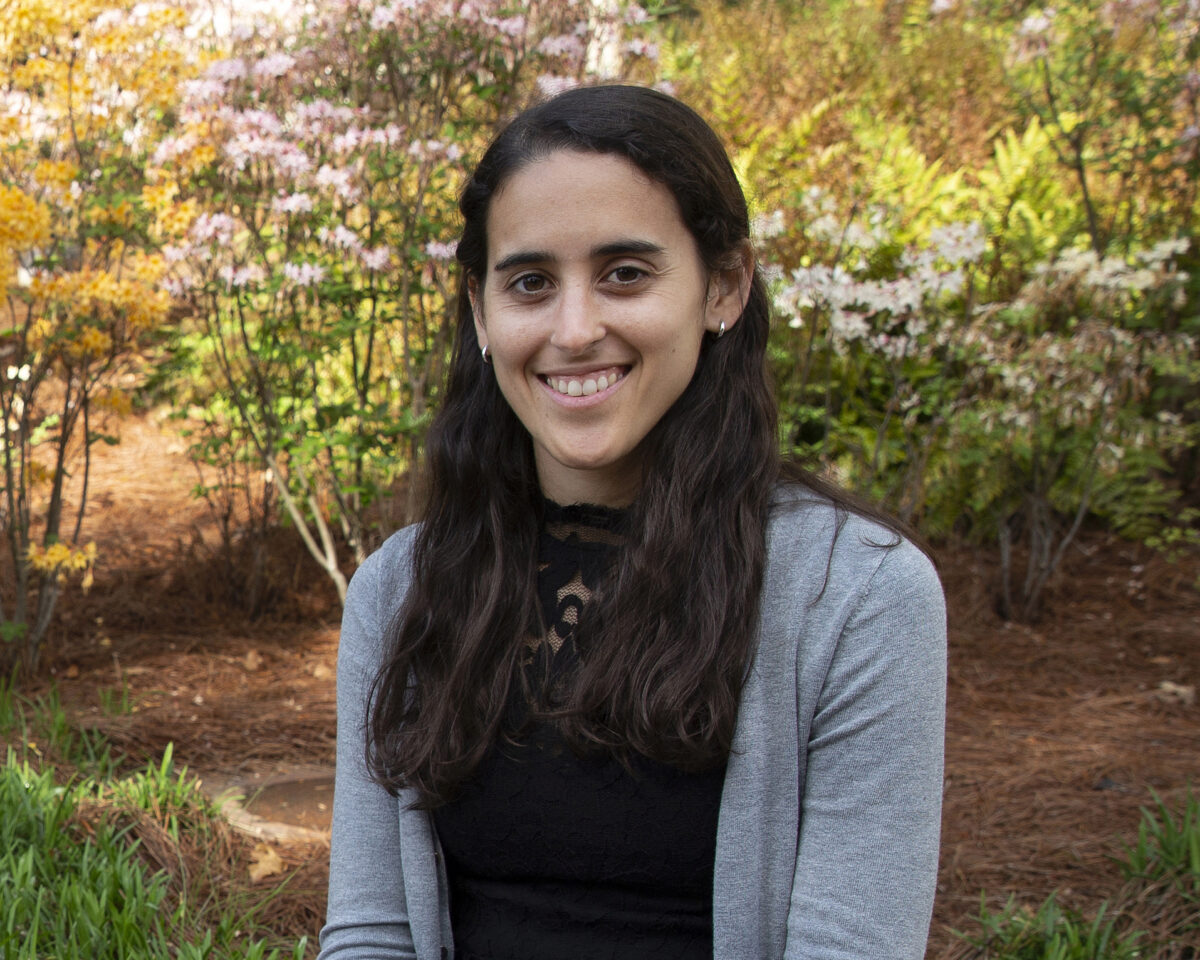March 3, 2022
Assistant Professor Emily D. Sanders joined Woodruff School faculty in January after completing her Ph.D. in Georgia Tech's School of Civil and Environmental Engineering in 2021. Find out how she wound up at Tech, where her research interests lie, and what she's teaching in this Q&A.
Where are you from and what did your path to Georgia Tech look like?
I am from Pennsylvania. I did my undergraduate studies in Civil Engineering at Bucknell University. From there, with the plan of becoming a structural engineer, I went for the one-year Master’s program at Stanford University. After graduating, I moved back to Pennsylvania and worked for a few years as a structural engineer performing seismic analyses of nuclear power plants. At that time, I became very interested in computational mechanics and decided to look for a PhD program where I could gain a higher level of understanding in that area. With some guidance from Ron Ziemian at Bucknell University, I happened upon my Ph.D. advisor, Glaucio Paulino, who introduced me to the field of structural and topology optimization with influences from mechanics, mathematics, computation, and art. After one semester at the University of Illinois at Urbana-Champaign, I moved with Prof. Paulino to Georgia Tech, where I completed my Ph.D. in pursuit of connecting optimization-based design and advanced manufacturing. I was fortunate that the opportunity to stay at Georgia Tech as an assistant professor presented itself at the right time and I could not pass it up.
Why did you choose a career in academia?
Two key aspects of an academic career are attractive to me- the opportunity to engage with and provide mentorship for young people that are full of energy and new ideas; and working in an environment that promotes intellectual freedom in research and fosters creativity in such pursuits.
Who would you say his influenced your career to this point?
I can not name all the family, friends, colleagues, teachers, mentors, and advisors that have influenced me and my career. There are simply too many. A few honorable mentions are Glaucio Paulino, Ron Ziemian, Manu Platt, and all the past and present students of my Ph.D. advisor’s research group.
When will you start teaching and what classes will you teach?
I am currently teaching ME 2016 – Computing Techniques. I hope to also teach courses related to mechanics, finite elements, and structural/topology optimization.
What is your research area?
My research focuses on optimization-based design and advanced manufacturing.
How did you get interested in that field?
I was originally inspired to pursue topology optimization by the harmony it creates between aesthetics and engineering function, often in the form of bio-mimicry.
What research projects are you going to be working on?
We are currently working on structural optimization with different classes of functionally-graded architected materials and exploring the implications that these spatially-varying mesoarchitectures can have on mechanical and biological function as well as design for advanced manufacturing. We are investigating their use in both metal and polymer additive manufacturing, and hope to understand how the properties we observe at small scales can be exploited in large scales, where we may make use of, for example, civil engineering materials.
What is the biggest challenge of being a new professor on campus so far?
On a campus so rich with diverse activities and opportunities, it is challenging to identify where to focus your time and energy so that you can engage meaningfully without being pulled in too many directions.
Outside of your work life, what do you like to do for fun?
I enjoy outdoor activities like running, cycling, and tennis.

